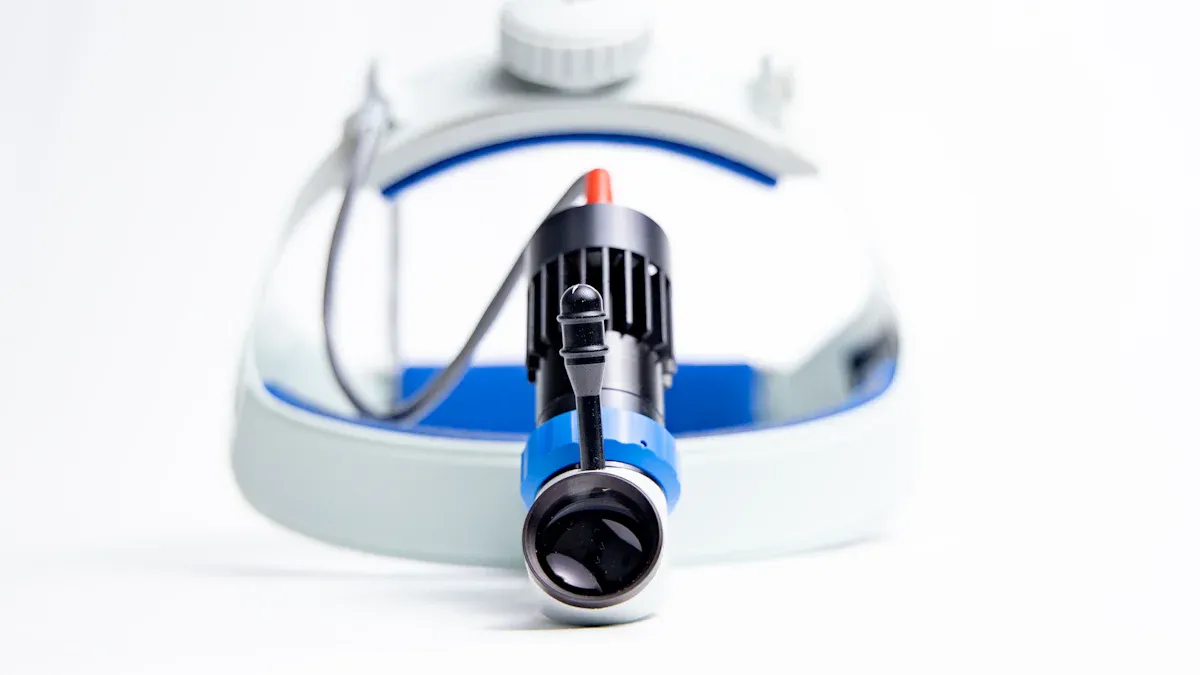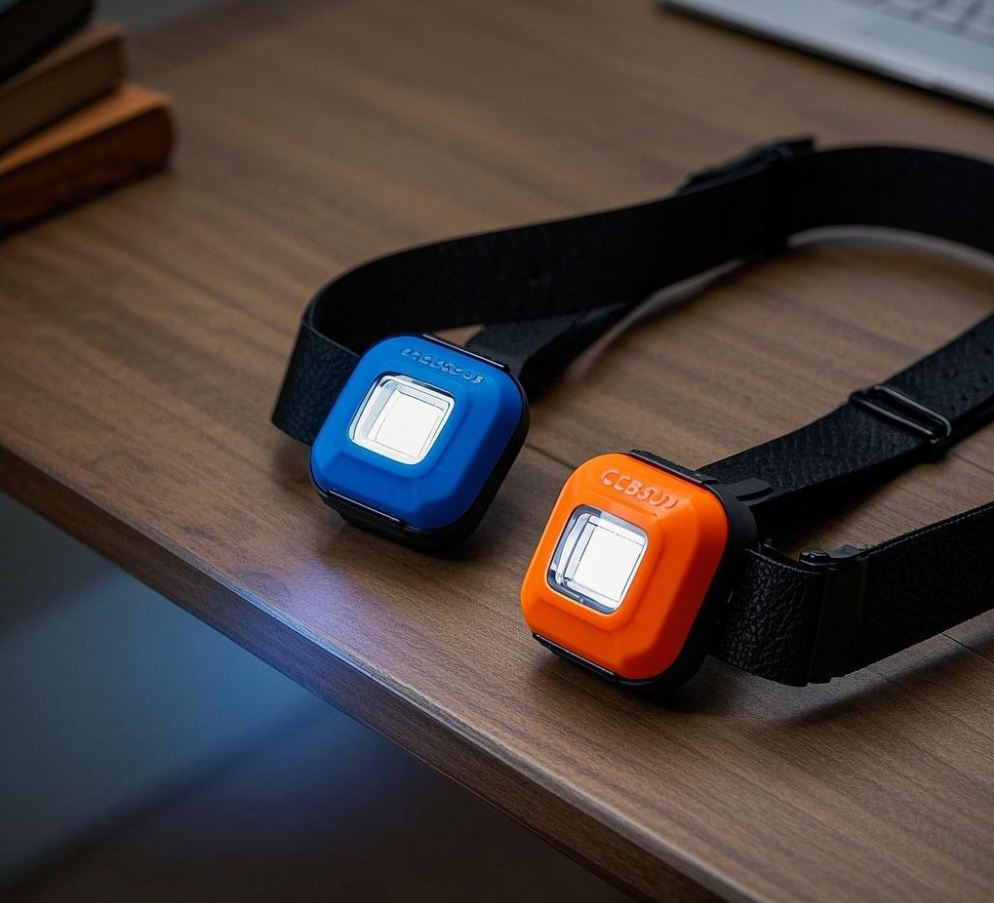
Hotels often face the challenge of balancing operational efficiency with cost management. Rechargeable headlamps offer a cost-effective solution compared to disposable models. Over five years, rechargeable headlamps incur significantly lower costs despite their higher initial investment. The minimal expense of recharging contrasts sharply with the over $100 annual battery replacement cost for AAA headlamps.
Type of Headlamp Initial Investment Annual Cost (5 years) Total Cost Over 5 Years Rechargeable Headlamp Higher Less than $1 Lower than AAA AAA Headlamp Lower Over $100 Higher than Rechargeable
Operational convenience and environmental sustainability further enhance the appeal of rechargeable options. These factors make them a practical choice for reducing hotel headlamp costs while supporting eco-friendly practices.
Key Takeaways
- Rechargeable headlamps cost more at first but save money later. Charging them costs less than $1 a year, while disposable batteries cost over $100 yearly.
- Rechargeable headlamps make work easier. They don’t need batteries changed often, saving time and helping hotel staff work better.
- Using rechargeable headlamps helps the environment. They can be reused, create less trash, and lower pollution, which eco-friendly guests like.
- Hotels should think about their size and needs before choosing. Bigger hotels save more with rechargeable headlamps because they last longer and cost less over time.
- Buying rechargeable headlamps makes hotels look good. It shows they care about the planet, which attracts guests who like green choices.
Hotel Headlamp Costs

Upfront Costs
Hotels often consider the initial investment when evaluating headlamp options. Rechargeable headlamps typically require a higher upfront cost compared to disposable models. This is due to their advanced features, such as USB charging capabilities and durable lithium batteries. However, this initial expense is offset by their long-term benefits. Disposable headlamps, while cheaper initially, demand frequent battery replacements, which can quickly add up. For hotels managing large inventories, the upfront savings of disposable headlamps may seem appealing, but they often lead to higher cumulative expenses.
Long-Term Costs
The long-term costs of hotel headlamp investments reveal a stark contrast between rechargeable and disposable options. Rechargeable headlamps incur minimal annual expenses, with charging costs amounting to less than $1 per unit. This makes them a cost-effective choice for hotels aiming to reduce operational expenses. In contrast, disposable headlamps require regular battery replacements, which can exceed $100 annually for each unit. Over time, this recurring cost significantly impacts hotel budgets, especially for properties with high staff turnover or frequent equipment usage.
Total Cost Over Time
When evaluating total costs over a five-year period, rechargeable headlamps emerge as the more economical option. Their higher upfront cost is quickly recouped through reduced maintenance and operational expenses. Disposable headlamps, on the other hand, accumulate substantial costs due to frequent battery replacements. For hotels, this means that investing in rechargeable headlamps not only lowers overall expenses but also simplifies inventory management. By choosing rechargeable options, hotels can achieve a balance between cost efficiency and operational convenience.
Operational Considerations
Convenience in Hotel Operations
Rechargeable headlamps simplify hotel operations by eliminating the need for frequent battery replacements. Staff can recharge these devices using USB cables connected to laptops, power banks, or wall adapters. This flexibility ensures that headlamps remain operational without delays. Hotels with high staff turnover or multiple shifts benefit from the quick recharging process, which reduces downtime. Additionally, rechargeable headlamps often feature multiple lighting modes, such as floodlight and strobe, enhancing their versatility for various tasks. Their lightweight and waterproof design also make them suitable for both indoor and outdoor hotel operations.
Maintenance Requirements
Rechargeable headlamps require minimal maintenance compared to disposable models. The durable lithium batteries used in these devices provide long-lasting performance, reducing the frequency of replacements. Hotels can save time and resources by avoiding the logistical challenges of managing large inventories of disposable batteries. Regular recharging ensures consistent performance, while the robust design of rechargeable headlamps minimizes wear and tear. This reliability makes them a practical choice for hotels aiming to streamline their maintenance processes and reduce operational disruptions.
Usability for Hotel Staff
Hotel staff find rechargeable headlamps easy to use due to their ergonomic design and user-friendly features. The adjustable straps and lightweight construction ensure comfort during extended use. The rear red indicator light on some models enhances safety by alerting others in low-light conditions. These headlamps also provide powerful illumination, lighting up entire areas and enabling staff to perform tasks efficiently. Their intuitive controls allow users to switch between lighting modes effortlessly, making them suitable for a wide range of hotel activities, from housekeeping to outdoor maintenance.
Environmental Impact

Sustainability Benefits of Rechargeable Headlamps
Rechargeable headlamps offer significant sustainability advantages. Their reusable nature eliminates the need for disposable batteries, reducing waste generation. Hotels using these headlamps contribute to environmental conservation by minimizing the extraction and processing of raw materials required for single-use batteries. The USB charging capability further enhances their eco-friendliness. Staff can recharge these devices using existing power sources, such as laptops or wall adapters, without additional energy-intensive equipment. This approach aligns with modern sustainability goals, making rechargeable headlamps an environmentally responsible choice for hotels.
Waste and Recycling Challenges of Disposable Headlamps
Disposable headlamps pose considerable waste management challenges. Each unit requires frequent battery replacements, leading to a continuous stream of hazardous waste. Batteries contain toxic substances like lead and mercury, which can leach into soil and water if improperly disposed of. Recycling programs for disposable batteries often remain inaccessible or underutilized, exacerbating the issue. Hotels relying on disposable headlamps face logistical difficulties in managing this waste responsibly. These challenges increase operational complexity and hinder efforts to reduce the environmental impact of hotel headlamp costs.
Carbon Footprint Comparison
The carbon footprint of rechargeable headlamps is significantly lower than that of disposable models. Manufacturing disposable batteries involves energy-intensive processes that release greenhouse gases. Frequent replacements amplify this environmental burden. In contrast, rechargeable headlamps utilize durable lithium batteries, which last for years with proper care. This longevity reduces the need for repeated production and transportation, cutting emissions. Hotels adopting rechargeable options can lower their overall carbon footprint while maintaining efficient operations. This shift supports global efforts to combat climate change and promotes sustainable business practices.
Recommendations for Hotels
Key Factors for Decision-Making
Hotels must evaluate several critical factors when choosing between rechargeable and disposable headlamps. Cost remains a primary consideration. While rechargeable headlamps require a higher initial investment, their long-term savings often outweigh the upfront expense. Operational efficiency also plays a significant role. Rechargeable models reduce the need for frequent battery replacements, streamlining hotel operations. Environmental impact is another key factor. Hotels aiming to align with sustainability goals should prioritize rechargeable options to minimize waste and carbon emissions.
Tip: Hotels should assess their staff’s usage patterns and operational needs before making a decision. For example, properties with frequent outdoor activities may benefit from the durability and waterproof features of rechargeable headlamps.
Tailored Advice by Hotel Size

The size of a hotel significantly influences its headlamp requirements. Small boutique hotels with limited staff may find disposable headlamps more manageable due to their lower upfront cost. However, mid-sized and large hotels often benefit from the scalability of rechargeable options. These properties can leverage bulk purchasing to reduce initial costs and enjoy long-term savings.
- Small Hotels: Focus on cost-effective solutions with minimal maintenance.
- Mid-Sized Hotels: Opt for rechargeable headlamps to balance cost and efficiency.
- Large Hotels: Invest in rechargeable models to streamline operations and support sustainability initiatives.
Balancing Costs with Sustainability Goals
Hotels must strike a balance between financial considerations and environmental responsibility. Rechargeable headlamps offer a unique opportunity to achieve both objectives. Their reusable design reduces waste, aligning with eco-friendly practices. At the same time, their long lifespan and low maintenance costs make them a financially sound choice.
Note: Adopting rechargeable headlamps can enhance a hotel’s reputation among environmentally conscious guests. This decision demonstrates a commitment to sustainability, which can serve as a valuable marketing tool.
By carefully weighing these factors, hotels can make informed decisions that align with their operational needs and long-term goals.
Rechargeable headlamps provide hotels with clear advantages in cost savings, operational efficiency, and environmental impact. Their long-term affordability, minimal maintenance, and eco-friendly design make them a practical choice for modern hospitality operations.
Key Insight: Hotels can align their headlamp choices with their size, guest expectations, and sustainability goals to maximize benefits.
By adopting rechargeable headlamps, hotels can reduce expenses, simplify operations, and demonstrate a commitment to environmental responsibility. This decision not only enhances operational performance but also strengthens a hotel’s reputation among eco-conscious travelers.
FAQ
What are the key benefits of rechargeable headlamps for hotels?
Rechargeable headlamps offer cost savings, operational efficiency, and environmental advantages. Their USB charging capability eliminates the need for disposable batteries, reducing waste. They also provide powerful illumination, multiple lighting modes, and durable designs, making them ideal for various hotel operations.
How do rechargeable headlamps improve hotel staff efficiency?
Rechargeable headlamps simplify operations by eliminating frequent battery replacements. Staff can recharge them using laptops, power banks, or wall adapters. Their lightweight design, adjustable straps, and versatile lighting modes enhance usability, allowing staff to perform tasks efficiently in both indoor and outdoor settings.
Are rechargeable headlamps suitable for outdoor hotel activities?
Yes, rechargeable headlamps are perfect for outdoor activities. Their waterproof design and powerful floodlight capabilities ensure reliable performance in various weather conditions. The rear red indicator light enhances safety, making them ideal for tasks like maintenance, security, or outdoor events.
How do rechargeable headlamps support hotel sustainability goals?
Rechargeable headlamps reduce environmental impact by eliminating disposable battery waste. Their long-lasting lithium batteries minimize resource consumption. Hotels adopting these headlamps align with sustainability initiatives, demonstrating eco-conscious practices that appeal to environmentally aware guests.
Can rechargeable headlamps handle extended use?
Rechargeable headlamps are designed for extended use. Their durable lithium batteries provide long-lasting performance, while USB charging ensures quick recharging. This reliability makes them suitable for hotels with high staff turnover or frequent equipment usage.
Post time: Mar-18-2025
 fannie@nbtorch.com
fannie@nbtorch.com +0086-0574-28909873
+0086-0574-28909873





